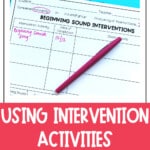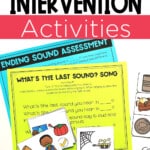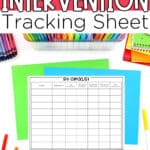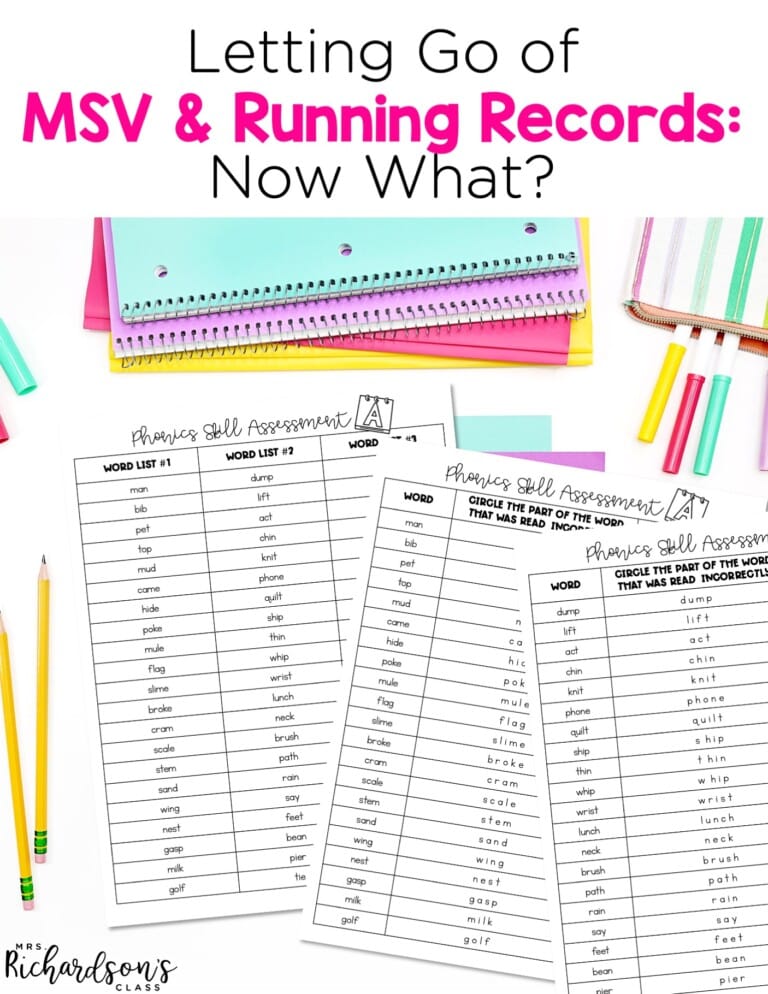

When you hear the phrases RTI, intervention activities, and reading intervention support, how do you feel? What comes to mind? I know when I was in my early years in the classroom, it hurt my brain. Managing RTI and intervention activities were just going to send me over the edge some years, but I really wanted to support my students. My reading intervention time was tricky to handle, but after a few years, I felt like I had a good flow
If you have found some of your students need support through RTI and intervention activities, you may also be feeling overwhelmed and unsure of how to get started. Or maybe the idea of RTI is brand new to you! Or maybe you are confident with your intervention strategies, but you’re looking for some fresh ideas to support your readers.
If you resonate with any of those thoughts, then you’re in the right place. Let’s jump into how to use intervention activities to support struggling readers in your classroom!
Most teachers have heard of RTI and know it stands for Response to Intervention, but what does that really mean? RTI simply means identifying students who are at risk of falling behind or struggling with reading. Each district may have its own testing or standards to go by to determine when students are deemed as at risk.
There are three tiers of intervention activities. Tier one looks like intentional, high-quality teaching in a whole group setting. This is good teaching for all students and where most students begin and stay. Tier two typically looks like a small group of students working on a specific skill with targeted instruction. Tier three typically looks like 1-1 targeted instruction with the teacher or a pull-out teacher.
At my campus, this is what the RTI process looked like:
After a preassessment to determine the student’s baseline in a specific area, we’d set a goal for the student to meet. Next, I’d begin with an intervention activity and see if the student was successful or not. If not, we’d move to another activity until the student was successful after several tries. If the student wasn’t successful, we’d move up to the next level of support.
Every district and campus is different in how they categorize students, tiers, and intervention activities. This is just an example of what it might look like.
Tracking RTI data and managing intervention activities is tough. I found that keeping a binder for just RTI and all its data tracking was the best way for me. I put my assessments, activities, and notes all in one place to make finding the data and sharing the data easier.
If you want a data tracking page to help you keep up with what interventions you’re using and the dates you’ve completed them, you can get this FREEBIE below! I hope you’ll find it helpful.
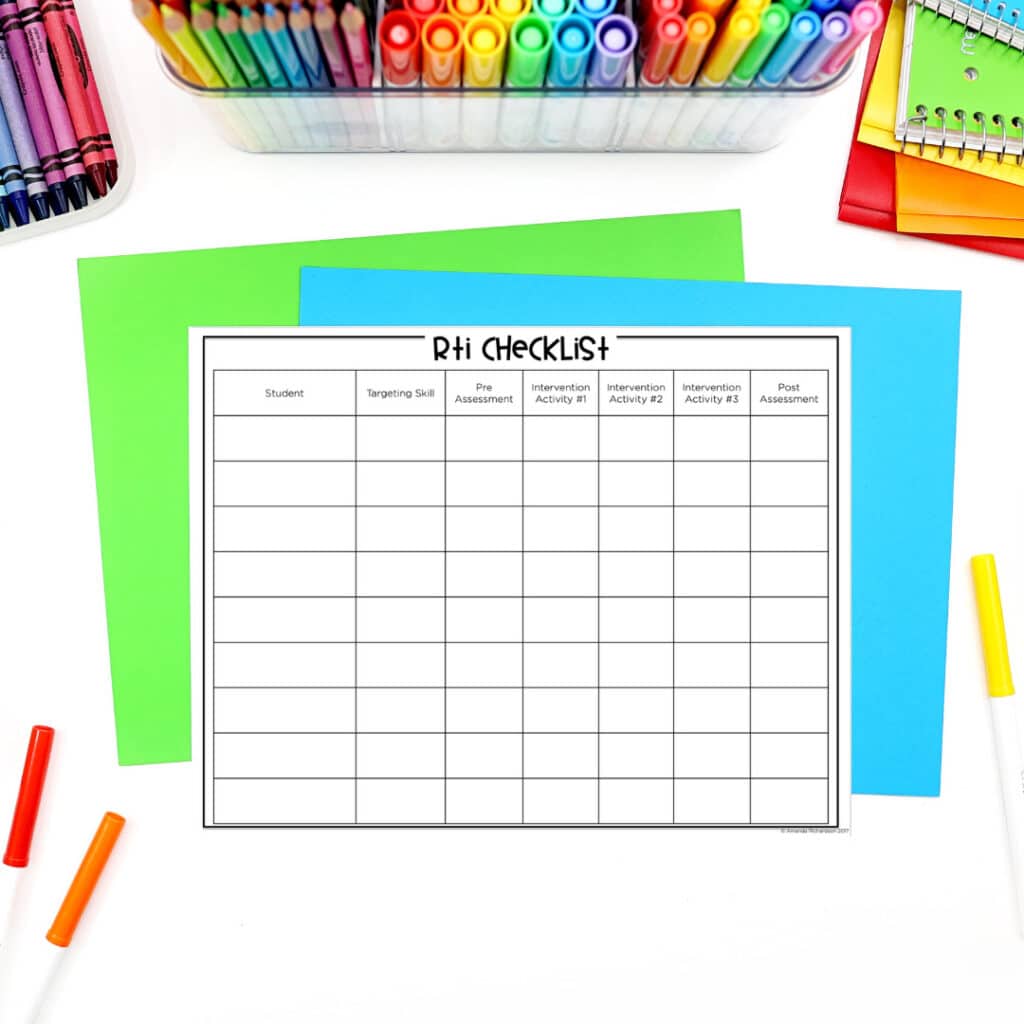
I also have another blog post on four tips for managing RTI in the classroom. You can read it here!
One of the first places I started with young readers who needed support was with phonemic awareness. The task of tracking all of the data, keeping students motivated, and coming up with intervention activities can be overwhelming! I know I was overwhelmed, at least! In my binder, I kept the assessments, goals, activities, and data altogether. You can read all about the system I used to help me keep it all together HERE.
If you don’t want to have to find time to put together assessments and activities, I have two sets already done for you!
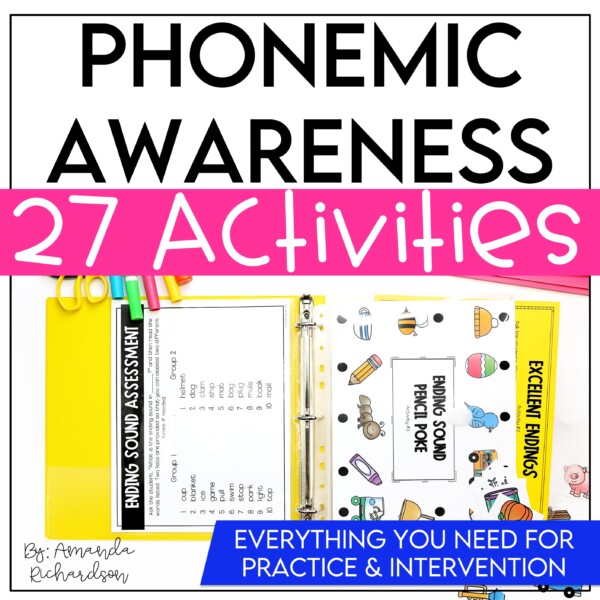
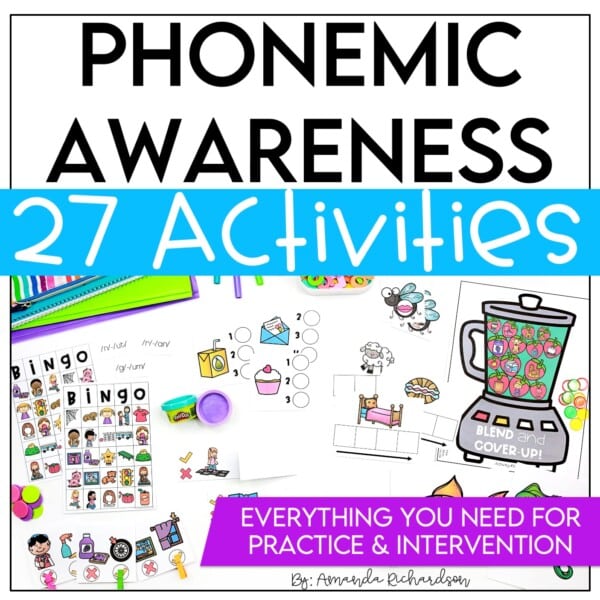
Each set has:
Pick up Set 1 or Set 2 (or both!) to be totally set for intervention activities for phonemic awareness.
Another one of my favorites to use for intervention activities is decodable passages. Decodable passages give your students explicit practice working on specific reading skills like blends, digraphs, and CVCe long vowels. Students can practice reading a word list, reading the words in a passage, and writing words in short sentences. Use the freebie from this blog post to track what you do!
I have three sets of decodable passages that you can use during RTI in small groups or for 1-1 instruction:
Another one of my favorite activities is literacy centers. You can take literacy centers and use them in small groups or for 1-1 intervention time with your students in RTI. You don’t have to reinvent the wheel! If you’ve identified a skill like rhyming, syllables, reading open syllables, or reading vowel teams, you can take literacy centers that target that area and use them in RTI.
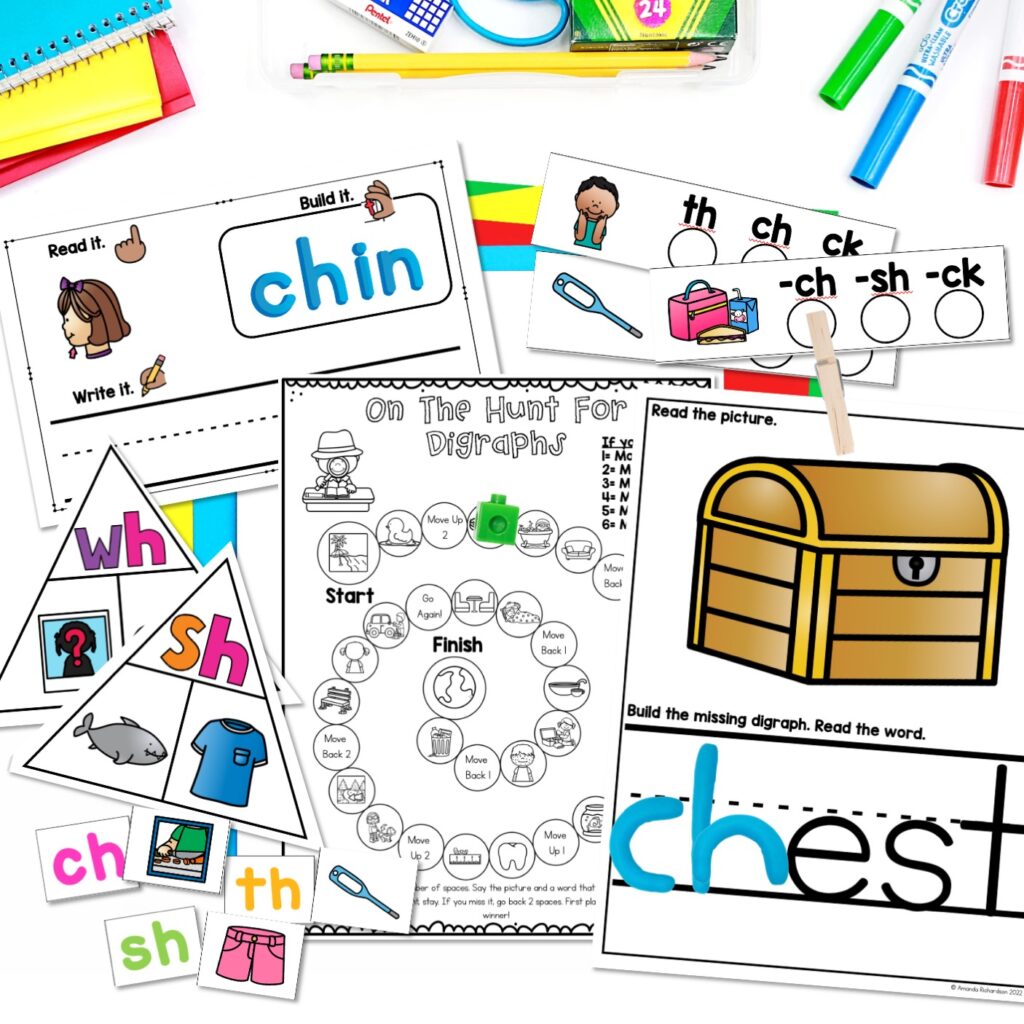
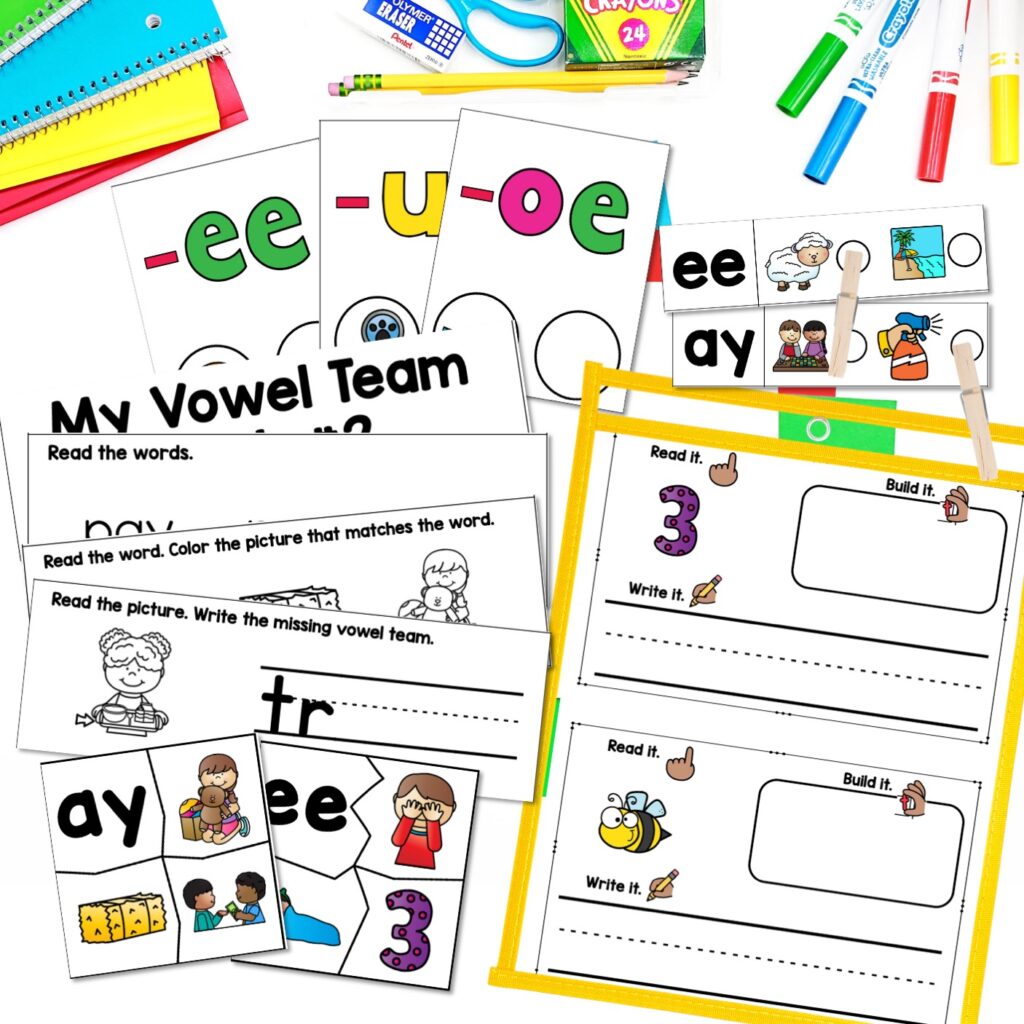
From clip cards and puzzles to reading/writing books and games, you can have students practice the same skill so many different ways. Use the freebie from this blog post to track what you do!
I have done-for-you science of reading literacy centers that you can use in RTI, too! The Science of Reading Literacy Centers Bundle has 101 literacy centers over 11 different skills including Alphabet, Rhyming, Syllables, Beginning Sounds, Ending Sounds, CVC Words, Blends, Digraphs, CVCe Words, Open Syllables, and Vowel Teams.
Figuring out the best system for you and your students can be tough! Take the time to try different systems and activities to see what will work best for your struggling readers.

Want to use the latest research to boost your readers during small groups? This FREE guide is packed with engaging ideas to help them grow!

I’m a K-1 teacher who is passionate about making lessons your students love and that are easy to implement for teachers. Helping teachers like you navigate their way through their literacy block brings me great joy. I am a lifelong learner who loves staying on top of current literacy learning and practices. Here, you’ll find the tools you need to move your K-2 students forward!


| Cookie | Duration | Description |
|---|---|---|
| cookielawinfo-checkbox-analytics | 11 months | This cookie is set by GDPR Cookie Consent plugin. The cookie is used to store the user consent for the cookies in the category "Analytics". |
| cookielawinfo-checkbox-functional | 11 months | The cookie is set by GDPR cookie consent to record the user consent for the cookies in the category "Functional". |
| cookielawinfo-checkbox-necessary | 11 months | This cookie is set by GDPR Cookie Consent plugin. The cookies is used to store the user consent for the cookies in the category "Necessary". |
| cookielawinfo-checkbox-others | 11 months | This cookie is set by GDPR Cookie Consent plugin. The cookie is used to store the user consent for the cookies in the category "Other. |
| cookielawinfo-checkbox-performance | 11 months | This cookie is set by GDPR Cookie Consent plugin. The cookie is used to store the user consent for the cookies in the category "Performance". |
| viewed_cookie_policy | 11 months | The cookie is set by the GDPR Cookie Consent plugin and is used to store whether or not user has consented to the use of cookies. It does not store any personal data. |
